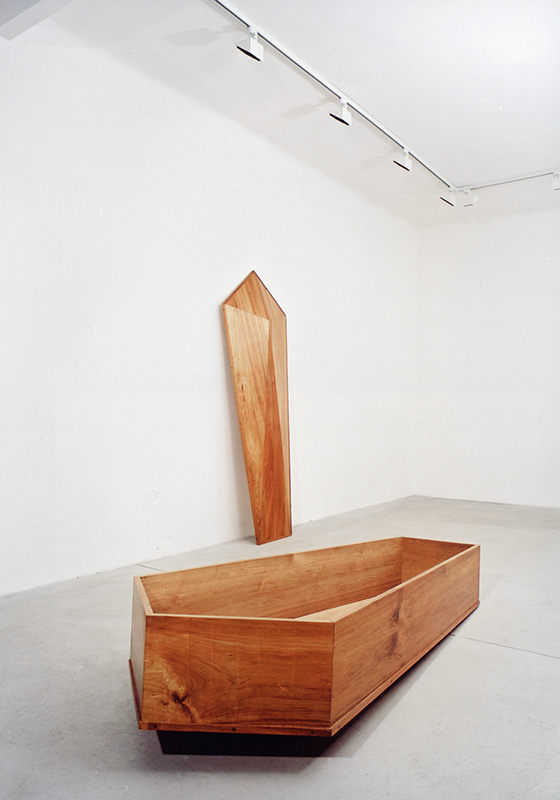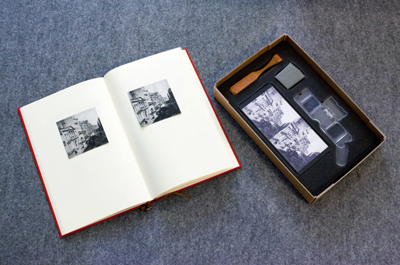Custom
Although many artists can be said to contemplate mortality in their work, usually in a veiled, Robert Frost kind of way — a clearheaded few have cut through the allusive haze and made their contemplation plain. Whether through drug addiction, natural selection, death with dignity, or suicide, intimations of death have gotten artists through many a hard night.
Staging death—whether literally or figuratively—is also an effective way to express a wish, foment resistance, or change careers, as modern and contemporary artists have proven through a variety of forms. Kazimir Malevich designed and built his own coffin without compromising his aesthetics or his politics. The Countess Castiglione, sensing her failing beauty and waning political influence, made The Foot, one of the nineteenth century political seductress and amateur photographer’s most sardonic images. Other approaches include crystalline annihilation (Robert Smithson’s Antiomorphic Chamber, 1965), weightless dispersion (Andy Warhol’s Silver Clouds, 1966), theatrical entombment (Paul Thek’s Death of a Hippie, 1967), subterranean surveillance (Bruce Nauman’s Underground Audio/Video Chamber, 19xx), ritualized grief (Gordon Matta-Clark’s Descending Steps (for Bataan), 197x) or delusional grandeur (Bas Jan Ader’s In Search of the Miraculous, 197x).
Best of all, as a work of art, Custom not only makes you a part of the esteemed art historical lineage mentioned above but, as such, will almost certainly increase in value over time. As Malevich’s austere Suprematist box made clear, the beauty of approaching death as a work of art is that, when the time comes, you can take it with you.



